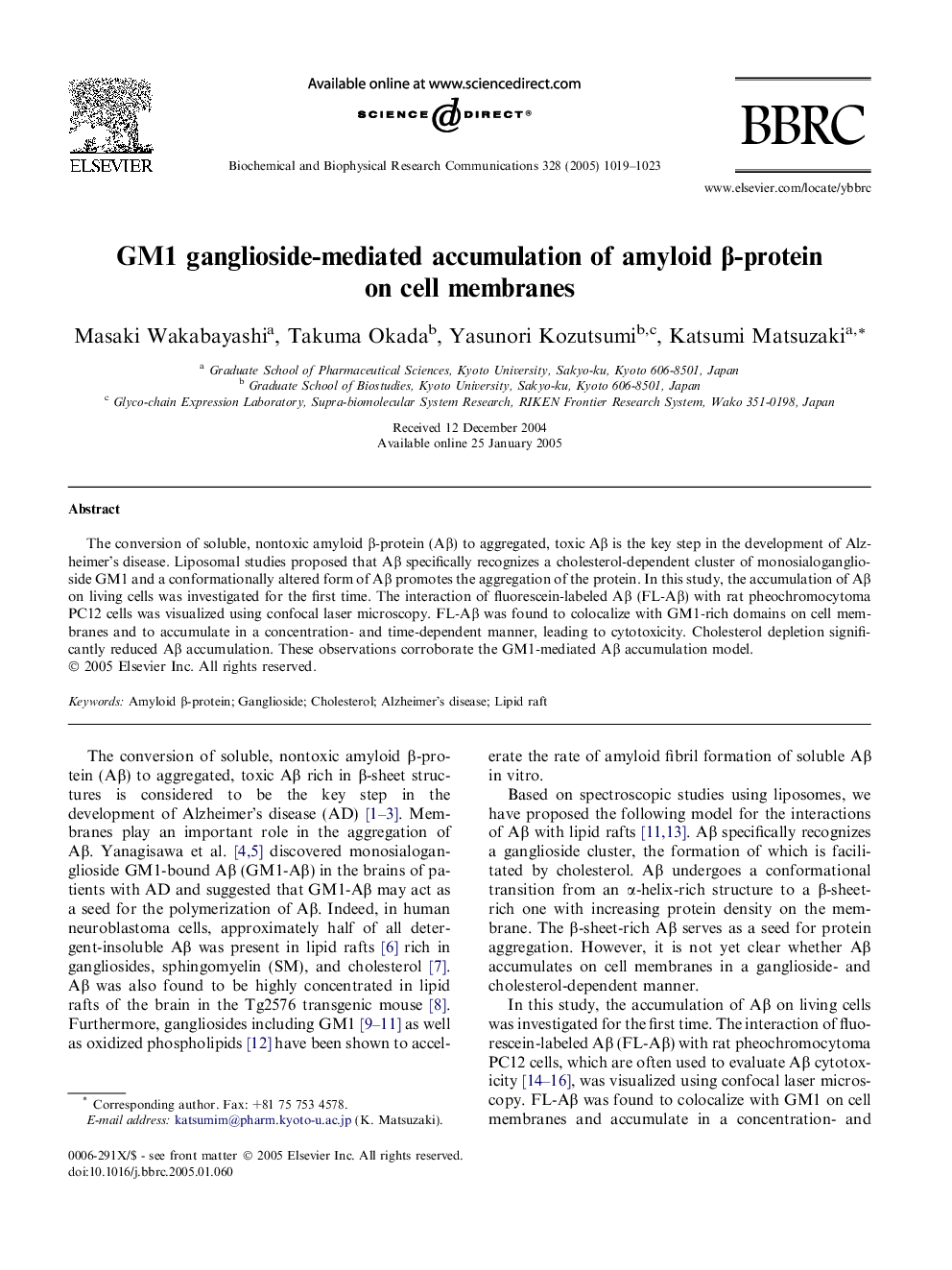| Article ID | Journal | Published Year | Pages | File Type |
|---|---|---|---|---|
| 10770612 | Biochemical and Biophysical Research Communications | 2005 | 5 Pages |
Abstract
The conversion of soluble, nontoxic amyloid β-protein (Aβ) to aggregated, toxic Aβ is the key step in the development of Alzheimer's disease. Liposomal studies proposed that Aβ specifically recognizes a cholesterol-dependent cluster of monosialoganglioside GM1 and a conformationally altered form of Aβ promotes the aggregation of the protein. In this study, the accumulation of Aβ on living cells was investigated for the first time. The interaction of fluorescein-labeled Aβ (FL-Aβ) with rat pheochromocytoma PC12 cells was visualized using confocal laser microscopy. FL-Aβ was found to colocalize with GM1-rich domains on cell membranes and to accumulate in a concentration- and time-dependent manner, leading to cytotoxicity. Cholesterol depletion significantly reduced Aβ accumulation. These observations corroborate the GM1-mediated Aβ accumulation model.
Related Topics
Life Sciences
Biochemistry, Genetics and Molecular Biology
Biochemistry
Authors
Masaki Wakabayashi, Takuma Okada, Yasunori Kozutsumi, Katsumi Matsuzaki,
